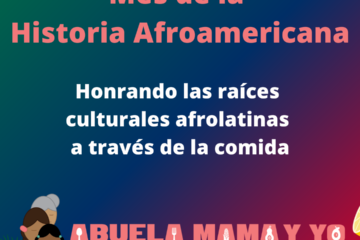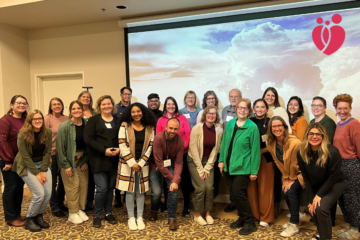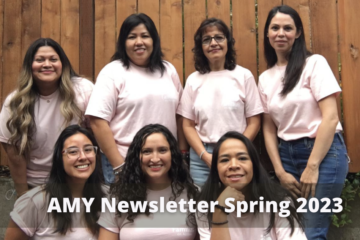COVID-19, which stands for coronavirus disease 2019, was first identified in Wuhan, the capital of Hubei Province, China in December 2019 and has now spread into a global pandemic. Governments around the world are rushing to institute measures that will keep families safe and limit the spread of the virus.
For the Latino community that already faces inequities in healthcare and accessing food, COVID-19 increases those disadvantages. Civic leaders are urging the government to consider economic inequalities that put people at higher risk of suffering from COVID-197. Advocacy groups highlight the need for the government to respond to the decision that some families, such as those working in hospitality, childcare, and retail, must make between potentially missing a paycheck and ensuring the health of their families8. This past Wednesday evening, President Trump signed a coronavirus aid package into effect that will expand unemployment assistance and the government is currently working on a $1 trillion proposal that, if passed, could provide economic stimulus for workers9.
Of particular concern is how people are accessing food in this time of crisis. Our food safety nets have not been tested like this since the time of the Great Recession in 20084. With businesses temporarily closing, children out of school, and other changes implemented to keep people safe, what does this mean for how you get food and stay healthy?
With sudden job layoffs and reduced work hours, people may have less money to spend on food. The nation’s primary safety net to combat food insecurity is the Supplemental Nutrition Assistance Program (SNAP or food stamps)4. In the face of this, the government has decided to suspend changes to the SNAP program that were set to go into effect April 1st, 20201. The changes would have altered work requirements for single adults receiving SNAP benefits but will not take effect while the nation faces coronavirus.
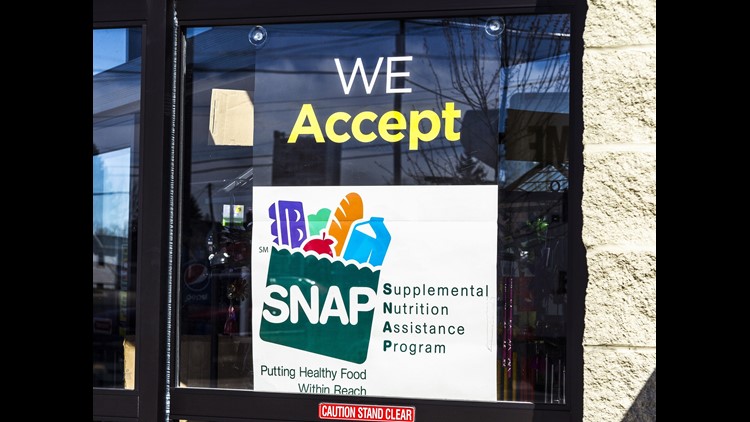
For some businesses, it is work as usual. As of March 19th, 2020, the US government deemed agriculture as a critical infrastructure, meaning that farms can keep operating like normal6. Some businesses may decide individually to modify operations, but in the face of this and other environmental threats such as climate change, the people that grow our food are finding innovative ways to continue providing the nation with food.
But how people access food is being limited. On March 17th, 2020 Oregon Governor Kate Brown signed an order which prohibits food establishments to offer on-site dining, along with prohibiting public gatherings of 25 people or more. Grocery stores and most farmers markets have been allowed to remain open. A vital resource, at participating farmers markets, SNAP recipients can double up to $10 per day spent on fruits and veggies with a program called Double Up Food Bucks (DUFB).
Additionally, mothers and children participating in the Women, Infants, and Children (WIC), may be affected by people who are buying food they don’t normally buy at the store. WIC dollars can be spent on certain foods, indicated by a WIC symbol next to the price tag. If you are buying food and it has a WIC symbol next to it and you don’t need it, consider choosing something different so that it can be available for a WIC participant2.
Taking care of infant nutrition in this time of crisis is also important. If you are or know somebody who is breastfeeding and worried about passing COVID-19 to the baby, the United States Centers for Disease Control and Prevention (CDC) currently recommends washing hands before breastfeeding and wearing a mask during breastfeeding to avoid passing the virus between mother and child. But, because so little is known about the virus, it’s unclear if it can be passed from the mother to the infant in breast milk3. Because breast milk is the most nutritious source of food for babies, it’s recommended to continue breastfeeding3.
Keeping safe and healthy may seem difficult in these times, but as more advocacy groups push for the government to recognize the disproportionate burden that social inequities place on racial minorities, including Latinos and Hispanics, resources are being expanded.
For more information on breastfeeding, go here: https://www.cdc.gov/coronavirus/2019-ncov/prepare/pregnancy-breastfeeding.html
If you have had changes to your income, apply for food stamps here: https://apps.state.or.us/onlineApplication/#NewClientAccount.
To see which farmers markets in Oregon are participating in DUFB and open, go here: https://doubleuporegon.org/
ESPAÑOL
Pandemia de coronavirus (COVID-19) y acceso a alimentos para latinos
El COVID-19, que significa enfermedad por coronavirus 2019, fue identificado por primera vez en Wuhan, la capital de la provincia Hubei, China en diciembre del 2019. Ahora se ha propagado al punto de convertirse en una pandemia global. Gobiernos alrededor del mundo se apresuran para instituir medidas que mantengan seguras a las familias y que limiten el avance del virus.
Para la comunidad latina, que de por sí enfrenta desigualdades con respecto al cuidado de la salud y al acceso a la comida, la presencia del COVID-91 aumenta las desventajas ya existentes. Los líderes civiles instan a nuestro gobierno a considerar las desigualdades económicas que ponen a ciertos sectores en mayor riesgo de contraer este virus. Las agencias que se encargan de defender a estas personas recalcan lo vital que es la respuesta gubernamental a la cuestión de si algunos empleados, como los que trabajan en servicios, guarderías o tiendas, deben trabajar aún arriesgando el bienestar de sus familias porque requieren su quincena. El miércoles pasado, el Presidente Trump aprobó un paquete de ayuda relacionado con el coronavirus que expandirá las prestaciones de desempleo, y el gobierno está armando una propuesta adicional que liberaría un trillón de dólares para apoyar la economía de los trabajadores. Pero ¿qué ocurrirá con los que no pueden solicitar la ayuda, debido a su estado migratorio?
Es particularmente preocupante la cuestión de cómo las familias seguirán alimentándose durante esta contingencia. Nuestro abasto alimentario no ha enfrentado semejante crisis desde la Gran Recesión de 2008. Puesto que abundan los cierres de negocios pequeños y los niños no van a la escuela, junto con otras medidas para salvaguardar la salud comunitaria ¿por qué medio conseguirán las familias su alimento y cómo se mantendrán saludables?
Con repentinos despidos y reducciones en el número de horas laborales, la gente tiene menos dinero para gastar en comida. El mayor sistema que tiene la nación para combatir la inseguridad alimentaria es el Supplemental Nutrition Assistance Program (SNAP, también conocido como estampillas para alimentos). Por este motivo, el gobierno ha decidido suspender las modificaciones al programa SNAP fijas para el 1 de abril del 2020. Son cambios que hubieran subido los requisitos de trabajo para los adultos solteros que recibieron las prestaciones SNAP, pero no tomarán efecto mientras la nación batalle el coronavirus.
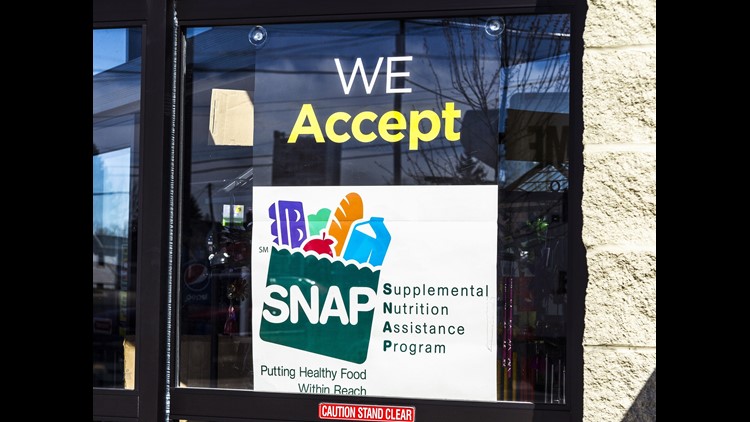
Algunos negocios siguen trabajando igual que antes. El 19 de marzo de 2020, el gobierno de los Estados Unidos decretó que la agricultura representa una infraestructura crítica, para que las granjas pudieran seguir operando de manera normal. Algunos negocios quizá modifiquen sus operaciones de forma autónoma; al enfrentar esta crisis y la del cambio climático, la gente que cultiva nuestra comida ha encontrado modos innovadores de continuar abasteciendo a la nación.
Por otro lado, se está reduciendo el acceso a la comida. El 17 de marzo de 2020, la Gobernadora de Oregon Kate Brown firmó una orden prohibiendo que los restaurantes ofrecieran servicio de mesa, y además prohibió las reuniones públicas de más de 25 personas. Sin embargo, las tiendas de abarrotes y la mayor parte de los mercados al aïre libre han podido seguir abiertas. Además, en algunos tianguis participantes, debido a un programa llamado Dólares Dobles para Comprar Comida (DUFB), la gente que cuenta con estampillas SNAP pueden llevarse el doble de mercancía por el mismo costo (hasta un valor de $10 por día) al comprar frutas y verduras.
Las mamás e hijos que participen en Women, Infants and Children (WIC) quizá sean afectados, si las personas que no cuenten con WIC llegan a comprar los productos que llevan el símbolo. Los “Dólares WIC” sólo se pueden usar para comprar ciertos productos; si usted no tiene WIC, sería mejor escoger algún otro producto que no lleve el símbolo, para que una participante lo pueda adquirir.
Es vital cuidar la nutrición infantil durante este momento de crisis. Si usted o alguien que usted conoce está amamantando y existe la preocupación de pasar el COVID-19 al bebé, debe saber que el Centro Nacional de Prevención y Control de las Enfermedades (CDC) recomienda actualmente que las manos se laven antes de amamantar y que la mamá se ponga cubrebocas durante el amamanto, para evitar la posibilidad de un contagio entre ella y su bebé. Por otro lado, se conoce tan poco sobre el nuevo virus que aún no se sabe con certeza si se puede transmitir por medio de la leche materna.
Mantenernos sanos y saludables quizá parezca difícil en estos tiempos, pero sí se pueden ampliar los recursos disponibles para las minorías raciales, incluyendo a los latinos, siempre y cuando los grupos de defensa sigamos instando al gobierno a reconocer que las desigualdades sociales causan mucho mayor sufrimiento en estos sectores.
Para mayor información sobre el amamanto, vea: https://espanol.cdc.gov/enes/coronavirus/2019-ncov/prepare/pregnancy-breastfeeding.html
Si su sueldo ha disminuido, puede solicitar estampillas para alimentos aquí:
- Complete el formulario (en inglés) en línea: https://apps.state.or.us/onlineApplication/#NewClientAccount.
- Complete el formulario (en español) y envíelo por correo: https://sharedsystems.dhsoha.state.or.us/DHSForms/Served/ds0415f.pdf
Para conocer los tianguis (mercados al aïre libre) en Oregon que participan en DUFB y que siguen abiertos, vea: https://doubleuporegon.org/
References | Referencias
1. https://www.buzzfeednews.com/article/paulmcleod/coronavirus-trump-food-stamp-change
3. https://www.cdc.gov/coronavirus/2019-ncov/prepare/pregnancy-breastfeeding.html
5. https://content.govdelivery.com/accounts/ORODA/bulletins/281f94a
7. https://www.hrw.org/news/2020/03/19/us-address-impact-covid-19-poor
8. https://www.hrw.org/news/2020/03/19/us-address-impact-covid-19-poor9. https://www.npr.org/2020/03/18/817737690/senate-passes-coronavirus-emergency-aid-sending-plan-to-president
